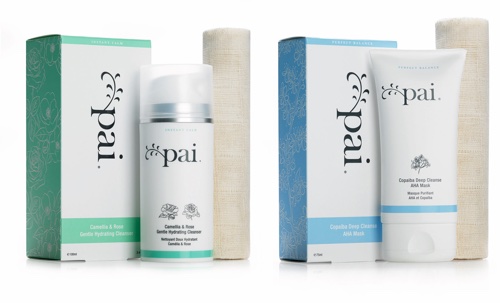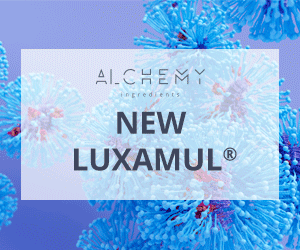The organic beauty sector has traditionally thrived on the safe ingredients ticket; certified products must meet strict standards for formulation and manufacture in order to use the much-revered marque of a certifier, but things are evolving.
The market has seen the growth it enjoyed pre-recession return with strong double-digit growth and the number of brands actively seeking out certification on the rise. According to the Soil Association’s 2015 Organic Market Report, sales of its certified organic beauty products jumped 20% in 2014, to reach just over £44m. The number of applicants it received grew 51%, not a mean feat for a niche market with high standards and the early indications show that 2015 will be much the same.
Consumers have also helped boost sales, voting with their wallets as greater retail and media visibility has put organic products front of mind. Key to this latest surge in popularity has been the growth in the wellness sector with consumers taking a more holistic approach to their health combining food, exercise, fashion and beauty, all with a green, clean leaning. Interestingly marketing is also focusing on the environmental and social benefits of organic, with more emphasis being placed on the sourcing of ingredients.
“Organic covers the www. of beauty,” explains Lou Green, Head of Sustainability at Neal’s Yard Remedies. “Firstly, these products work. We now have clinical data to prove this, a first for the organic beauty industry. Secondly, organic beauty products are better for workers as no pesticides are used in the growing of the crops. Workers in developing countries often have little or no protective clothing and can be exposed to dangerous chemicals. With organic that’s not the case. Finally, organic is better for wildlife. There is 50% more wildlife found on organic farms which protects nature for future generations.”
“We are increasingly seeing more interest in where our products come from, not just our food but our beauty products too,” explains Emma Reinhold, Trade Relations Manager at the Soil Association. “Consumers are asking more questions about sustainability and are putting ethical matters into their purchasing criteria. It’s the antidote to conspicuous consumption.”
The Soil Association recently highlighted this during Organic Beauty Week, a week long festival promoting organic beauty brands and educating consumers about all things organic.
“There is huge consumer appetite to know more about what organic actually is. The industry has been at the mercy of greenwashing for so long now that the organic message has got lost. We launched the Campaign for Clarity in response to this and to reclaim organic for those brands who really want to invest in integrity, environmental and social improvements to this industry.”
Environmental awareness also got a boost with the United Nations Climate Change Conference COP 21 in Paris in December and Organic beauty stands to benefit.
Popular claims currently used by brands include the ethical sourcing of ingredients, green chemistry, sustainable packaging, organic and sustainable production methods, water management and a reduction of carbon footprints, according to research analyst, Organic Monitor. Interestingly climate change and carbon footprint is becoming more prevalent.
Segmenting to succeed
While green and social considerations are proving popular with consumers, a new breed of organic beauty product is emerging, where ‘organic’ is not always the main marketing message. Specific product benefits are becoming more prevalent on packaging, with sensitivity claims topping the list.
British brands Pai Skincare and Odylique have played the sensitivity card with considerable success. Pai founder Sarah Brown created the brand after suffering from urticaria and couldn’t find sensitive skin care that didn’t have a medicinal positioning. “I literally had to throw out my entire beauty regime overnight and start again but I was disappointed by the sensitive skin options around so I created my own. We are a sensitive skin care brand first and an organic brand second. But of course there is an affinity,” she explains. Similarly, Odylique (formerly Essential Care) was born out of a need for sensitive skin solutions, which founder Margaret Weeds discovered in organic ingredients.

Elsewhere organic positioning has expanded into new areas of the beauty world. Skin & Tonic has kept things simple with its brand positioning; products contain no more than seven ingredients, proof that their mantra of less is more can definitely ring true. The products are also certified organic by the Soil Association. Another newcomer to the market is SKN-RG, which positions itself as a high performance organic skin care brand. The packaging is sleek and modern with a strong scientific, results-driven message. Products include Organic Cellular Balance Toner, Super Rich Collagen Boosting Face Mask and Organic PRO Serum Concentrate.
While the market may be segmenting, the ‘free from’ message still remains a key driver for the sector. According to Organic Monitor, 90% of UK consumers of natural and organic beauty products say ‘avoidance of synthetic chemicals’ is important or very important to them. Certification is increasingly important too, with 43% stating they look for assurance symbols and logos on personal care products – up from 33% in 2007. The Soil Association symbol is the most sought after for certified products, with nearly 30% of shoppers saying they look for it.
Globally, Organic Monitor values the market at US$10.4bn, with certified products making up $3bn in Western Europe alone. This only equates to a 1% share of the global beauty market but with greater segmentation, a hallmark of the non-organic beauty market over the last decade, the organic market looks set to follow in hot pursuit of a greater market share.
Facing the future
The huge groundswell in the health and wellness market has no doubt helped raise awareness of organic beauty, with bloggers and social media starlets leading the charge in this greater visibility, primarily in food but moving rapidly into beauty. To put it bluntly, organic is now sexy, with food bloggers like Deliciously Ella and Hemsley + Hemsley the poster girls of the cause and a growing collective of green beauty bloggers using social media airwaves to extol the virtues of organic beauty. They even have their own hashtag, #gbblogger.
Bringing organic to the mainstream has moved the industry from the niche into a highly sophisticated, marketing-driven machine. “Natural trends that once would have remained confined to the specialty food sector are now rapidly scaling up to the mass market, and are having an immediate impact on beauty, apparel and even architecture,” says Lucie Greene, Worldwide Director of the Innovation Group. “What began as a philosophy in food is now infiltrating virtually every lifestyle category. Natural products are no longer seen as niche alternatives, but are aspirational. We’re seeing a renaissance of new products that meet this demand, and consumers are willing to pay accordingly.”
The Innovation Group has found that 80% of US millennials and 83% of US consumers with children under six are willing to pay more for natural and/or organic food and beverages, with 69% of consumers stating they don’t believe products labelled ‘natural’ are truly natural, suggesting that brands will have to work harder to win them over.
The link between organic food and beauty is getting more pronounced, with superfoods such as avocado, kale and pumpkin now featuring in ingredients lists for organic beauty products. Organic brand Nourish, for instance, has created a collection of skin care products based on kale, while organic food and beverage brands such as Pukka are distilling the beauty and wellbeing benefits of their teas and supplements. The benefits go both ways.
With the organic beauty market riding high and enjoying the newfound visibility that the wellness trend has brought, the market looks set to flourish. A more sophisticated focus on positioning, packaging and marketing puts it in the running for one of the best success stories to come out of the beauty industry for years. And as more conventional brands eye the growth opportunities that organic beauty represents, we can expect to see much more from this sector. The challenge will be to keep the integrity of organic intact whilst still being able to scale it up.





